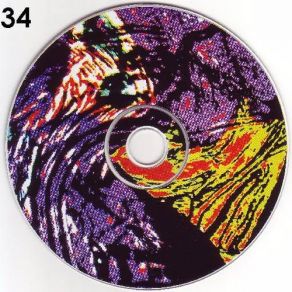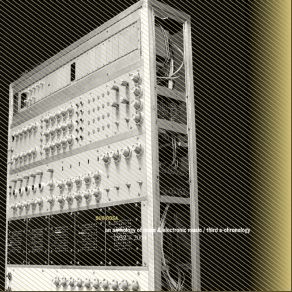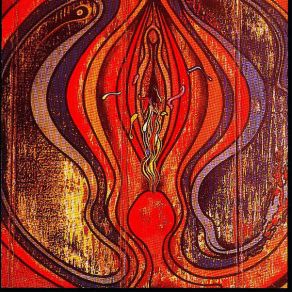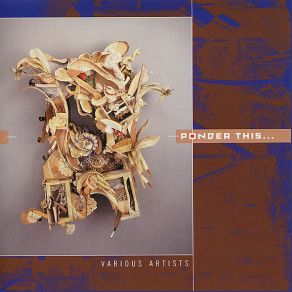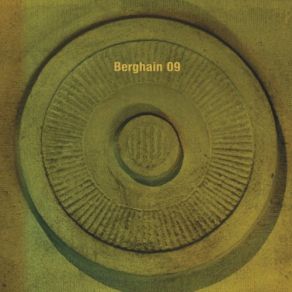Merzbow
Wikimp3 information about the music of Merzbow. On our website we have 70 albums and 26 collections of artist Merzbow. You can find useful information and download songs of this artist. We also know that Merzbow represents Electronica genres.
Biography
[Edit]There is no need to argue: Merzbow stands as the most important artist in noise music. The favorite moniker of Japanese Masami Akita appears on hundreds of albums. The name comes from German artist Kurt Schwitters' famous work Merzbau, which he also called The Cathedral of Erotic Misery. Akita's choice reflects his fondness for junk art (through Schwitters' collage method) and his fascination with ritualized eroticism, namely in the form of fetishism and bondage. All these elements constitute the Merzbow persona.
Akita was born in Tokyo in 1956. He grew up with psychedelic rock and began to play the guitar in progressive rock cover bands, in particular with drummer Kiyoshi Mizutani, who would remain a frequent collaborator. After high school, Akita studied literature and visual arts in college. There he discovered free jazz and studied seriously the ideas of Dada and the surrealists (Salvador Dali remained a big influence). Akita gradually withdrew himself from the rock scene and began experimenting in his basement with broken tape recorders and feedback.
In 1979, Akita created his own cassette label, Lowest Arts & Music, and released the first of many albums, Metal Acoustic Music. Infiltrating the then-burgeoning network of underground industrial music, Merzbow lined up one cassette after another, packaged in Xeroxed collage art. His harsh noise eschewed the primitive anger found on this scene (Throbbing Gristle, Man Is the Bastard) to reach a Zen state, calm inside the storm. Mizutani occasionally appeared on some of the raw material, as would other musicians (like Reiko.A), but in essence Merzbow is Akita and would always be. The artist/group made low-budget live appearances in Tokyo, but his main focus remained on his art production and his writing (he is erudite in 20th century art and the Japanese tradition of bondage).
In 1983, Akita's first LP, Material Action 2 (NAM), was released on Chaos/Eastern Works in Japan. Out of the mail-art network and into the specialty record shops, Merzbow began to attract some eyes and ears. Akita started a second label, ZSF Produkt, which put out dozens of 7"s, EPs, LPs, and more cassettes. By the late '80s, other record labels had begun to pay interest, namely the Australian Extreme. Collaborative (1988), an LP recorded with Achim Wollscheid, brought the Merzbow sound to more international listeners, and slowly Akita invaded other territories. By the mid-'90s, his reputation verged on the mythical. He toured Europe and the U.S., and had high(er)-profile releases on Extreme, RRR, and Alchemy.
In 1997, Extreme announced it was putting in production a 50-CD box set, Merzbox. It was finally released three years later. It includes 30 reissues dating as far back as 1979, and 20 discs' worth of unreleased material, and remains the biggest musical statement in the history of noise music. More widely available albums for Alien8 Recordings (Aqua Necromancer, 1998) and Tzadik (1930, 1998), combined with constant worldwide touring, have taken the artist out of mythical status and propelled him into the legendary. In the late '90s, Akita started to collaborate with other artists outside the Merzbow moniker, namely with Mike Patton (as Maldoror) and Otomo Yoshihide. Both a prolific composer and performer, Akita continued his string of Merzbow releases into the next century, including Frog (2001), V (2003), Merzbird (2004), the two-volume set Minazo (2006), Merzbear and Synth Destruction (2007), Dolphin Sonar (2008), and the multi-volume 13 Japanese Birds series issued monthly between January 2009 and January 2010. He followed this massive undertaking with Another Merzbow Records, released by the U.K's Dirtier Promotions imprint in April of 2010. Ever prolific, and with a huge backlog of archival material, Akita released ten collections in 2011, as well as an additional four live sets, and four more albums appeared in 2012, along with the box sets Merzphysics and Merzmorphosis. ~ François Couture, Rovi
Title: Live at Fac251 (feat. Balázs Pándi) / Live at Fac251 (feat. Balazs Pandi)
Artist: Merzbow
Genre: Electronica, Rock
Title: Cuts
Artist: Merzbow, Mats Gustafsson, Balázs Pándi / Balazs Pandi
Genre: Electronica, Jazz, Alternative, Classical
Title: 13 Japanese Birds, Volume 6: Kamo
Artist: Merzbow
Genre: Dark Ambient, Noise Rock, Experimental
Title: Another Merzbow Records
Artist: Merzbow
Genre: Electronica, Rock, Dancefloor, Dance Pop, Classical
Title: Animal Liberation - Until Every Cage Is Empty
Artist: Merzbow
Genre: Electronica, Experimental
Title: Rondo / 7Phases / Blowback
Artist: Merzbow, Kim Cascone
Genre: Ambient, Noise Rock, Experimental
Title: Ducks : Live in NYC - EP
Artist: Merzbow, Balázs Pándi / Balazs Pandi
Genre: Jazz, Avant Garde Jazz
Title: Rectal Anarchy
Artist: Merzbow, Gore Beyond Necropsy
Genre: Ambient, Noise Rock, Experimental
Collections
Title: Fabulous S**t
Genre: Electronica, Alternative
Title: Split Series 1-8
Genre: Alternative
Title: Epitaph for John
Genre: Electronica, Alternative
Title: Untitled Ten
Genre: Electronica, Alternative, J-Pop
Title: 2XH Vs HHR Vol 1 - Where Is My Robotic Boot (2xCD)
Genre: Rock
Title: Ponder This...
Genre: Rock, Alternative
Title: Throne - A Cold Spring Sampler
Genre: Electronica
Title: X-X Section
Genre: Ambient, Electronica, Alternative
Title: Ulver 1993-2003: 1st Decade In the Machines
Genre: Electronica
Title: Treatment of the Dead - A Cold Spring Sampler
Genre: Electronica
Title: Works 1987 - 1993
Genre: Noise Rock, Experimental
Title: Switching Rethorics
Title: No Red Seas Vol. I (CD1)
Genre: Dark Ambient, Electronica, Alternative, Classical, IDM
Title: Crash Of The Titans
Genre: Ambient, Noise Rock, Experimental
Title: Subsidia Pataphysica
Genre: Ambient, Noise Rock, Experimental
Title: Smegma Plays Merzbow
Genre: Ambient, Noise Rock, Experimental
Title: Merzbow / Kouhei
Genre: Ambient, Noise Rock, Experimental
Title: The Haters & Merzbow (Remastered)
Genre: Ambient, Noise Rock, Experimental
Title: Cage 22
Genre: Ambient, Electronica, Industrial, Rock, Disco, Psychedelic
Title: Relapse Records: 25 Years Of Contamination (CD2)
Genre: Metal
Title: Earthen: A Cold Spring Sampler
Genre: Electronica, Industrial, Experimental
Title: Berghain 09
Genre: Techno
Title: Relapse Sampler 2019
Genre: Metal
Featuring albums
Title: Chicken Switch
Artist: Melvins
Genre: Rock, Grunge, Hard Rock, Metal, Heavy Metal, Alternative
Title: Ulver 1993-2003: 1st Decade In The Machines
Artist: Various Artists
Genre: Electronica, Rock, Hard Rock, Metal, Death Metal, Dancefloor, Pop, Dance Pop
Title: Gensho
Artist: Boris With Merzbow
Genre: Japanoise, Tech House, Hip Hop/R&B, Metal, Doom Metal, Experimental
Title: Trax Test (Excerpts From the Modular Network 1981-1987)
Artist: Various Artists
Genre: Electronica, Alternative
Title: SOL-A Self-Banishment Ritual
Artist: Seeming
Genre: Electronica, Industrial, Synth Pop, Indie
Title: 80s Underground Cassette Culture Volume 1
Artist: Various Artists
Genre: Electronica, Industrial
Title: AngelMaker
Artist: AngelMaker
Genre: Rock, Black Metal, Emo, Post Hardcore, Punk Rock, Metal, Death Metal
Title: Ohm Resistance: 20 Years - B Side
Artist: Various Artists
Genre: Drum & Bass, Dancefloor, Dance Pop





























































